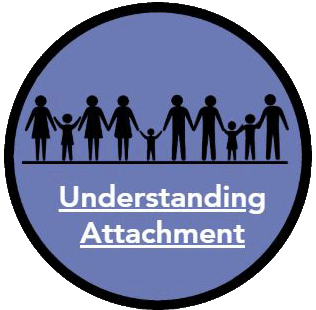

Understanding attachment

Understanding Attachment Packs
The Understanding Attachment Packs are a community co-production and are in constant review by the community and will be updated over time with the input of the SE Essex fostering community.
They are free to use and can be downloaded here or from the Understanding Attachment website below.
U/A Carers Pack
U/A Young People's Pack
When you try to approach a subject as important as attachment in order to make it more accessible for our community in South East Essex, it is a daunting task. There is no doubt that for young people who can’t stay with their birth families foster care and adoption is a massive life changing experience that will have deep and long-lasting effects on their lives.
This doesn’t take into account what they have already experienced, which is often serious and damaging. This is why we have sought to do it as a community with the voices of those young people who have experienced the care system being heard.
Young people who experience this separation from their birth families need carers who are fully equipped to help them cope with their behaviour as well as then being able to move them forward to be able to develop as safely as possible.
Everyone recognises that close loving relationships are key to a healthy and happy young person. Attachment Theory developed by John Bowlby in the late sixties and early seventies offers a framework for those who want to use it in order to understand the power of relationships. When a young person is in crisis, they often behave in ways incomprehensible to many adults.
This project is trying to get at that mystery and support foster carers in our area to know more about this important subject in order to be able to unravel some of the mysteries of what young people in care need in order to be able to move forward in their lives.
Welcome to Understanding Attachment.
According to the Social Care Institute for Excellence, 50% of teenage foster placements break down which leads to vulnerable young people finding themselves in multiple new homes. This lack of stability can have a serious effect on their education, ability to form friendships and overall mental health. We are delighted to announce that the Big Lottery has awarded Blade Education a grant to work with the South East Essex Fostering Community to investigate how a better understanding of attachment could help to reduce placement breakdown and improve outcomes for looked after children.
The Understanding Attachment Project builds on the pioneering work of the 'What’s Happening to Me?' project, that brought together those who have direct experience of the care system, either with experience of being fostered, or working with children in care, to enable more successful placements with the young people and empower more people to fulfill their potential as foster carers. If you would like to see the pilot website for the WHTM? project please go to http://bladeeducation.wixsite.com/whtm
We aim by continuing this model of learning in and with the SE Essex Fostering Community to find a way to begin to address the breakdown in teenage foster care placements and that fewer failed placements increase the retention of foster carers. We also aim to improve the resilience of foster carers in South East Essex by building a group for those experienced foster carers to be able to pass on their best practice to those that are earlier on in their fostering journey.
Understanding Attachment has established the South East Essex Fostering Community Group, to bring together the experiences of those that care with those who experience that care. This project identifies a targeted and insightful way for carers and care children to understand more about attachment, what it is, why it is vital to all of our relationships, and how it is formed.
If you would like to learn more then please see the Understanding Attachment website:
www.understandingattachment.org.uk
